Afghanistan, Then And Now
Afghanistan was a much different place half a century ago.
Reason’s Tim Cavanaugh passes along the above photo and others depicting Afghanistan in the 1950 and 60s. The contrast between then and now is apparent:
“Given the images people see on TV, many conclude Afghanistan never made it out of the Middle Ages,” writes Mohammad Qayoumi at Retronaut. “But that is not the Afghanistan I remember. I grew up in Kabul in the 1950s and ’60s. Stirred by the fact that news portrayals of the country’s history didn’t mesh with my own memories, I wanted to discover the truth.”
Qayoumi’s gallery of what the Graveyard of Empires looked like before it was brought into contemporary civilization by the Hippie Trail, Soviet modernization, Taliban discipline and American nation-building is at once endearing, heartbreaking and disturbing. Because it turns out pre-modern Afghanistan looked pretty, well, modern.
(…)
What’s disturbing is that actual civilzational retrograde is so rare in the modern world that you can almost believe it never happens. Even a few years after World War II, most Western Europeans had a higher standard of living than they had had before the war. Yet here you have a country that was apparently not in the dark ages, but got there as fast as it could.
What’s also striking as you look at the pictures is the extent to which Afghan women of this era seem so much different from what we see today. There are no burqa’s, no hajib’s, just the simple headscarf that you see many Muslim-American women wearing today. Men wore business suits and other basically western clothes. It looked, in other words, like many other third world cities of the era that saw the path to prosperity in copying the ways of the West. At some point, obviously, that changed, and the twin influences of Communism and Islam obviously under cut the modernization that was apparently underway in the country. Hamid Karzai was born in 1957 and grew up in this world, but one wonders if he actually remembers much about it. Things very well have been different in the tribal and rural areas, of course, but a nation like this is often defined by its capital city and the Kabul of half a century ago seems so different from the images we see today that it’s hard to believe they are the same city.
Obviously, the nearly endless cycle of war that started in the late 1970s is a key part of what happened to this nation, but it strikes me that there might be something more that led to the insanity that is modern Afghanistan. Given the choice, I’d have to bet that most Afghans would prefer the Kabul of the 1960s to what they live in today. How it got that way in such a short period of time is difficult to think about, though, because it makes you wonder if it could happen elsewhere in the world.
At this point, Afghanistan couldn’t possibly be further away from where it was when these pictures were taken.
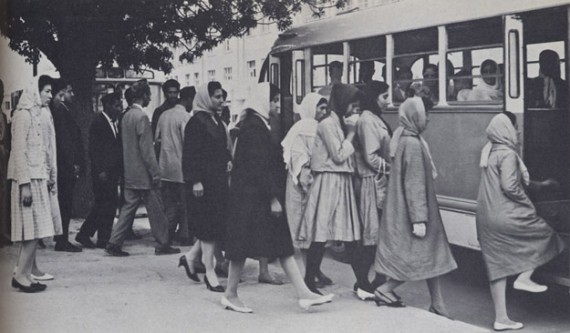

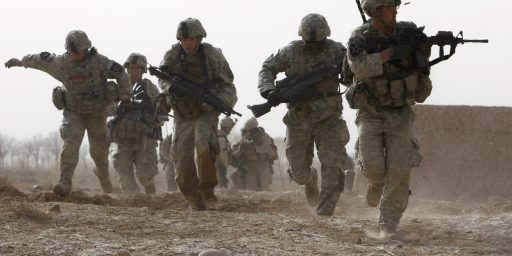

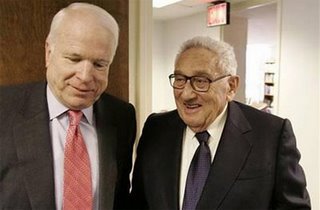
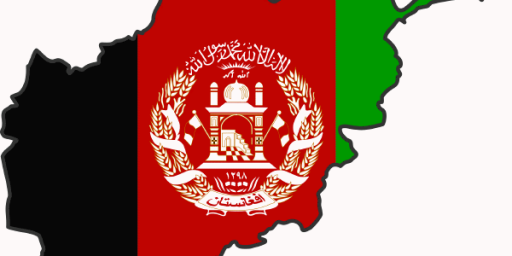
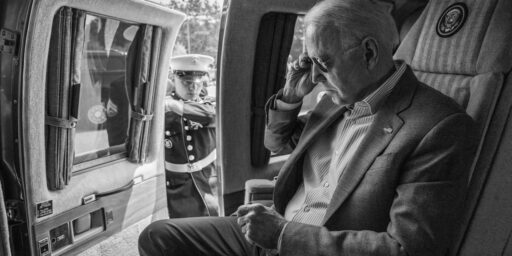
These pictures are misleading. We are talking about Kabul, not Afghanistan. The tribal areas were very different from these photos.
Sure, but the tribal areas went their own way.
The Soviet invasion was a huge disaster, which also nourished the jihadi movement. Russia should be paying reparations today, except they’d just be looted.
@Andre Kenji: I think that’s accurate – there was Kabul and then the rest of Afghanistan which really was a middle ages tribal community. After the Soviet invasion the rest of Afghanistan was brought to Kabul.
@Ron Beasley: and @Andre Kenji:
I did acknowledge this in my post. Nonetheless, I don’t think you can dismiss the fact that Kabul once was a seemingly thriving and modern city. To the extent it retains any of that status today, it’s because of its status as an armed camp.
Also, I think the social changes that these photographs indicate are an important point.
@Doug Mataconis: I agree that social change was happening that might have spread out from Kabul. But the Soviet invasion and then the US invasion resulted in religious extremism taking hold. I say might have because once you got out of Kabul the population was for the most part opposed to Western Ways. It’s not unlike Iran – Tehran was very modern but a majority were still opposed to Western Ways that were forced on them by the Sha. A good reference if you are interested is We Heard the Heavens Then: A Memoir of Iran.
This doesn’t just look like just any other picture from the 60s, it looks like an idyllic picture of the early 60s that people use in nostalgic ways to make life look better than it is now. I am absolutely dumbfounded.
Afghanistan was ruled by a King during this period, incidentally, which lasted until roughly 1973 when he was deposed via a bloodless coup while on an overseas trip.
He passed away in 2007, but I do recall him returning to Afghanistan after the Taliban had been deposed in 2002
@Doug Mataconis: Ruled by a King is a bit strong – he was more of a mediator.
Ron,
Fair point. And, of course, there were the tribal powers-that-be that he had to deal with.
There was talk, as I recall, of restoring the monarchy when he returned to the country in 2002 but he declined the role.
@Doug Mataconis: Anyway, thank you for this Doug – the pictures are fascinating.
@Ron Beasley:
Agreed. Tremendously interesting.
Given some of the miltiary and political horrors in Central Asia and the Middle East over the last 40 years, people forget that up until the 1960s they were considered to be well on their way into the modern world. My mother still says that two of her favorite places to go on jet-set vacations in the 60s were Beirut and Tehran.
As I noted on Twitter, the parallels with Cuba are striking.
@James Joyner: I’m not so sure James. I think Iran is a better comparison. In Cuba the 1% owned 99% of the stuff which is unsustainable. The fact that a majority of the 99% were Catholics and opposed to the gambling, prostitution and organized crime may have played a part but it was primarily economic.
In Iran the while 1 % owned most the stuff it was primarily a revolt against western ways – a cultural rather than an economic thing.
@James Joyner: Actually if your are talking about the result rather than the cause I see your point.
There’s no getting around the fact that the Soviets and the United States worked very, very hard to destroy the Kabul you see in these pictures.
@Doug Mataconis:
Well, these photos were clearly produced for promotional purposes. They weren´t a realistic portrait of Afghanistan. One can say that Afghanistan looks like to be pretty different than it was, but I would not take these pictures as the most realistic source in the world to say that. There are promotional movies from the 50´s of São Paulo and Rio de Janeiro that are clearly misleading.
How did the hippies help destroy Afghanistan? Drum circles?